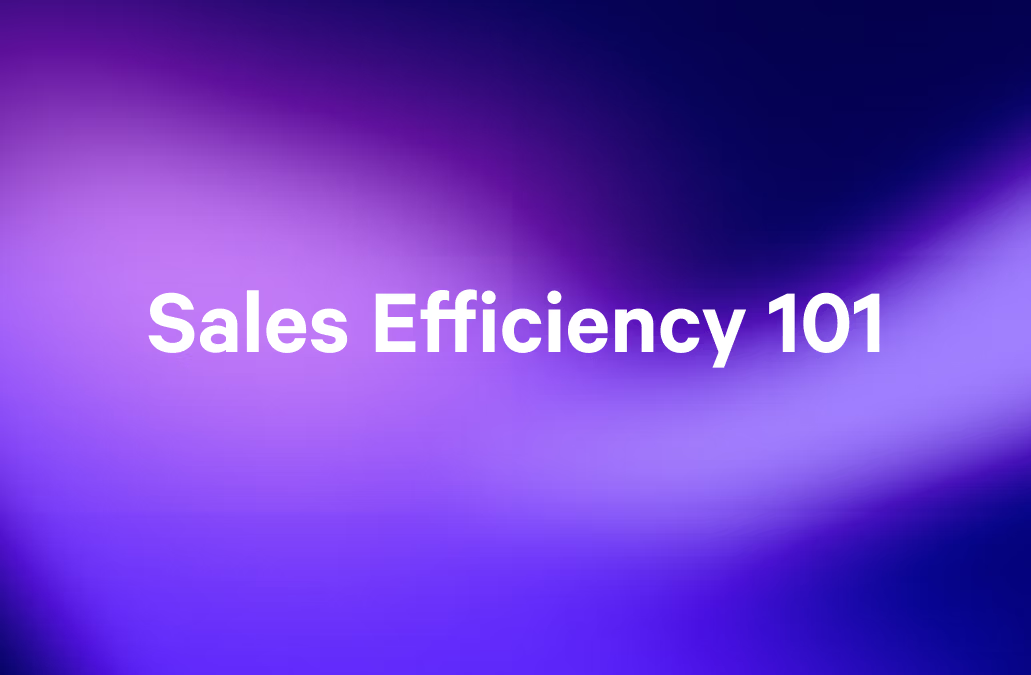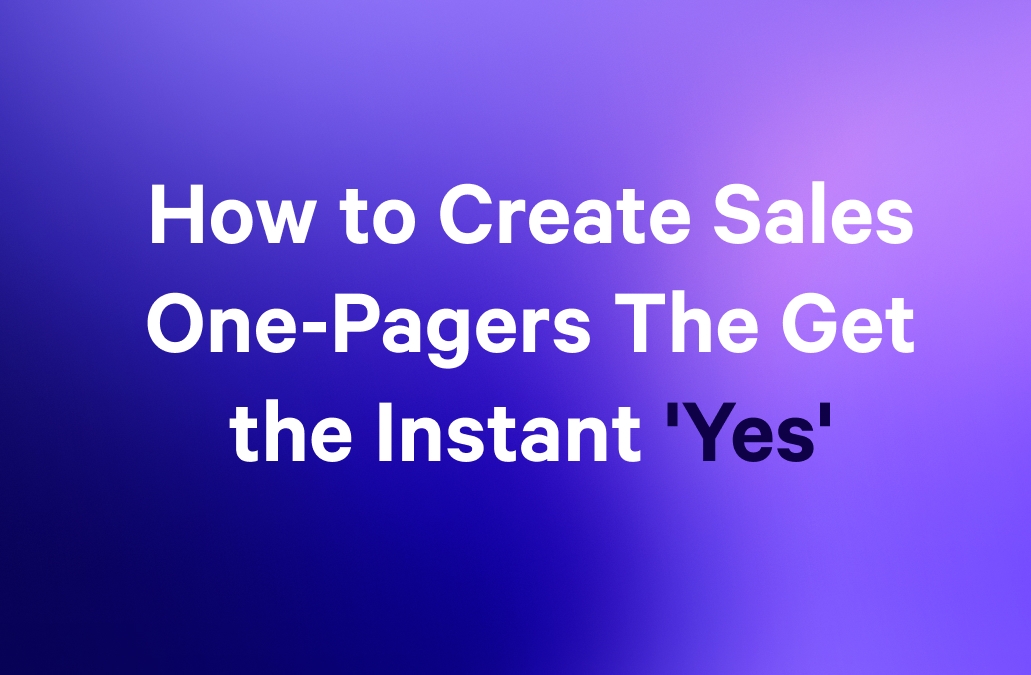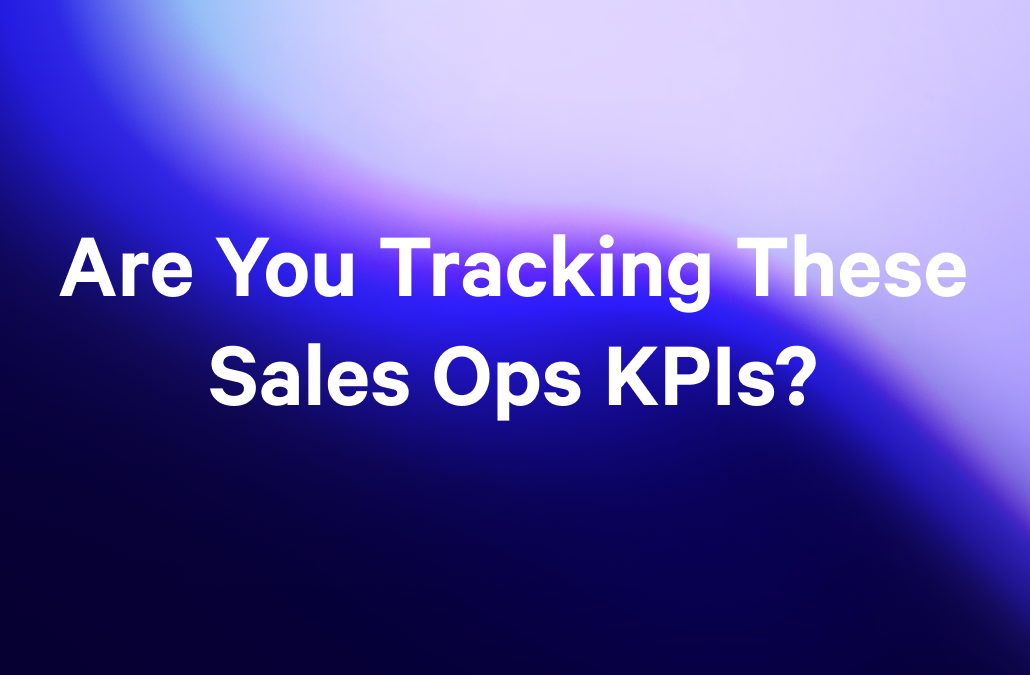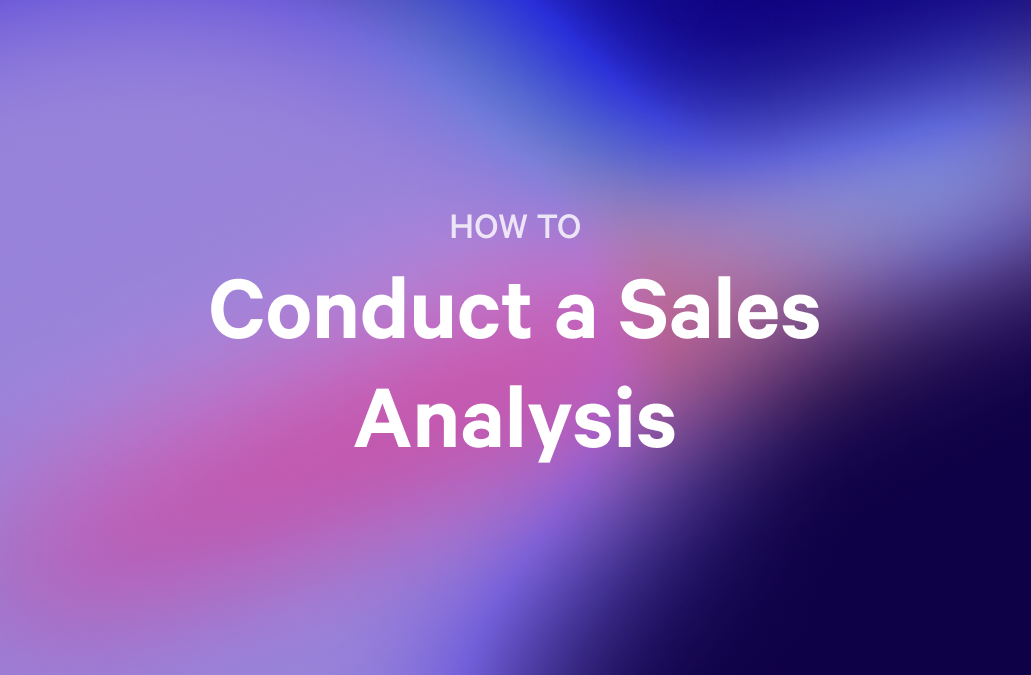You're at dinner with other sales leaders, swapping war stories. One leader mentions their team consistently closes deals in 15 days. Another grimaces—his team averages 45 days for the same deals. "Must have better reps," or “easier prospects,” someone suggests.
But here's what's really happening: one team has a system, the other is winging it.
If you're seeing deals vanish after promising demos, new reps struggle through costly trial and error, and competitors consistently win with repeatable systems, chances are your sales workflow is the missing piece.
In this article, you'll discover how to engineer predictable revenue through workflow design—practical frameworks that work whether you're running 10 reps or 100+. But first, let's clarify what we actually mean by "sales workflow"—because most teams are doing it completely wrong.
What is a sales workflow (and why most teams get it wrong)
A sales workflow is not the same as a sales process—yet most teams use these terms interchangeably. And that’s exactly where things start to break down. When your reps only follow a process without a workflow, deals stall, follow-ups get missed, and performance becomes guesswork.
Your sales process is a strategic outline of what should happen, typically framed as stages such as prospecting, qualification, discovery, proposal, and close. Your workflow, on the other hand, is the execution engine. It defines the specific actions, responsibilities, and triggers at each stage.
Here’s the difference in practice:
| Sales Process | Sales Workflow |
|---|---|
Shows the stages | Shows the actions and responsibilities at each stage |
Lead → Demo → Proposal → Close | Call within 2 hours, ask these 5 questions, send a follow-up email |
Answers what happens | Answers who does it, when, and how |
High-level strategic roadmap | Tactical execution guide used day to day |
Helps with forecasting and pipeline reviews | Helps with onboarding, coaching, and improving conversion consistency |
Without a workflow, you’re relying on rep intuition instead of a repeatable system. You think you have a sales engine, but really, you’re just hoping your strongest players can pull everyone over the line. Don’t think so? Test it for yourself with the following questions:
- What exactly happens in the 48 hours after a demo?
- Who owns the handoff from marketing to sales, and how is it triggered?
- What specific criteria must be met before a deal moves to proposal?
If the answers vary by rep, your workflow doesn’t exist—it’s being improvised.
Building your custom sales workflow
You might think you have a workflow because you have a sales playbook. The stages are clearly labelled. The responsibilities seem obvious. Maybe there’s even a Notion doc floating around. But when you ask three reps how a proposal gets sent, or who’s responsible for confirming stakeholders post-demo, you’ll often get three different answers.
That’s the real test: Can everyone on your team describe the key moments in your sales motion the same way—and execute them the same way?
A workflow is what turns your custom sales process into a repeatable motion. It shows not just what should happen, but how, by whom, and when. It's the difference between knowing the route and having clear directions at every turn.
So, where do you even begin?
The workflow audit: where to start
Think of this stage as a discovery process for yourself. You’re not inventing something new—you’re surfacing the messy reality that’s already unfolding across your pipeline.
Use the audit map below to visualise the four most common breakdown zones—this will help surface where your team needs more structure.

The key thing here is not to rely on anecdotal feedback, but to observe it firsthand. Shadow a few reps across performance tiers. Review their CRM activity. Compare how three different deals moved from demo to proposal. Are the steps consistent? Are there rogue processes? Are reps skipping key actions just to keep deals moving?
One rep might send a dynamic, mobile-friendly sales proposal that includes a personalized video, on-brand visuals, ROI calculators, and interactive pricing—all delivered in a link that the buyer can engage with instantly.

Another might copy and paste content from a dusty template, attach a PDF, and hope for the best. Both are trying to close, but only one is delivering a buyer experience that reduces friction, answers questions upfront, and shortens the path to “yes.”
That’s the version worth codifying—and repeating.
Building your workflow: step-by-step
Now that you’ve identified the gaps and surfaced how deals are currently moving through your funnel, the next step is to design something repeatable. You’re moving from observation to structure: deciding what to keep, what to tighten, and what to build from scratch.
Let’s break this down into what to do, why it matters, and what to look for. These steps form the foundation of a scalable, high-performing sales workflow.

Step 1. Map your current reality
In this step, your goal is to document the current state of your workflow—not how you want it to run yet, but how it actually operates today. You’ve already surfaced gaps and inconsistencies in the audit; now you’re capturing the full flow as it exists, so you can make intentional design decisions in later steps.
Shadow 3–5 deals end-to-end. Talk to the reps who owned them. Observe how they approached qualification, what follow-ups they sent, when the proposal went out, and how they tracked engagement. Look at email trails, calendar invites, CRM updates, proposal versions—every artefact that shows what actually occurred.
This is often where the biggest surprises live. You’ll spot reps skipping required fields, writing custom emails from scratch, or using outdated decks instead of approved templates. These aren’t bad habits—they’re signs your workflow isn’t clear or convenient enough to follow. And that’s exactly what you’re here to fix.
Step 2. Identify success patterns
This step is about understanding what your top performers do differently—and why it works. Review the deals they’ve closed recently and unpack the exact steps they took: how they handled discovery, when they brought in stakeholders, how quickly they followed up, and what kind of sales documents (contracts, sales battle cards, or presentations) they used to drive decisions forward.
Interview them if needed. Ask what’s non-negotiable in their process, what they skip, and where they add personalisation or automation. Pay attention to small workflow habits—things like looping in finance early, or always booking a follow-up before ending a demo.
Often, the difference between average and exceptional performance isn’t pitch quality—it’s workflow discipline. Top reps don’t just move deals faster; they manage sales velocity more deliberately at each stage.
Step 3. Spot failure points
Now, flip the lens. Look at the deals that stalled, dragged, or dropped out of the funnel completely. Trace them back through the funnel. Where did they lose momentum? Was there a breakdown in communication? Was a proposal delayed? Did handoffs create confusion?
Go beyond surface-level blame. Look at missed follow-ups, slow approvals, disjointed messaging between teams, or key steps that got skipped when a deal was “rushed.”
Not every lost deal is a rep problem. Many are workflow problems disguised as poor performance. By identifying where deals commonly derail, you give yourself the insight to build a system that catches them before they fall through the cracks.
Step 4. Define clear stage advancement criteria
This is where you remove guesswork. For each stage in your sales process—discovery, proposal, negotiation, close—define exactly what needs to be true for a deal to progress. For example, “discovery completed” shouldn’t mean “we had a chat.” It could mean: primary pain point validated, buyer persona tagged, next step agreed, and notes logged in CRM. “Proposal sent” might require: an interactive proposal delivered via approved template, buyer engagement tracked, and follow-up booked within 24 hours.
When your criteria are vague, reps either advance deals too early or stall because they’re unsure. Clear standards bring consistency, improve forecasting, and make pipeline reviews more objective and transparent.
Step 5. Define required actions per stage
Beyond advancement criteria, each stage should be accompanied by a set of required actions—the core tasks that ensure deals progress with quality and consistency.
For example, the proposal stage might require a rep to:
- Generate the proposal using a pre-approved, branded template
- Include pricing and ROI calculators tailored to the deal
- Track buyer engagement through analytics
- Send a recap email and schedule a follow-up call within 24 hours
Know that without these actions defined, reps rely on memory or personal preference. Some over-engineer. Others skip key steps. But when every stage includes clearly documented actions, the workflow becomes repeatable, measurable, and easier to coach.
Step 6. Create handoff protocols
Every handoff in your funnel—from SDR to AE, AE to Sales Engineer, AE to Customer Success—needs structure. Define what information must be passed along, in what format, and by whom. Clarify when a handoff is triggered (e.g., proposal sent, contract reviewed) and who’s responsible for the next touchpoint.
Build it into your tools wherever possible: auto-populate CS handoff summaries from CRM notes, or trigger onboarding tasks when a proposal is marked “accepted.”
Handoffs are one of the most common points of failure in any sales motion. Not because people don’t care, but because it’s unclear who’s supposed to act next. Tight handoff protocols keep deals moving and enhance the buyer experience.
Step 7. Build ongoing feedback loops
A strong workflow isn’t static—it evolves. Schedule regular checkpoints to review how deals are progressing through the system. Use time-in-stage reporting to identify bottlenecks. Review proposals and follow-ups to understand what’s landing and what’s not. Talk to reps. Talk to buyers.
If your team uses dynamic proposal tools, dig into engagement data. See which sections buyers spend time on, where they stall, and when they ghost. That feedback loop can inform not just the proposal design, but your discovery and follow-up strategy too.

Workflows fail when they go stale. Sales cycles change. Buyer expectations shift. Reps adapt faster than documentation. Feedback loops ensure your workflow stays useful, current, and aligned with how your buyers actually buy.
The right tools don’t create your workflow—they support it
By now, you’ve mapped the gaps, designed your workflow, and clarified what “good” looks like at every stage. The tools you choose should simply make this system easier to follow.
That might mean a CRM like Salesforce or HubSpot that automates stage progression and eliminates manual updates. Or an outreach tool that logs follow-ups without rep effort. It also means integrating platforms like Clari or Gong to monitor rep execution. And when it comes to proposals, Qwilr helps you accelerate deals with interactive, on-brand documents that track engagement, automate approvals, and trigger CRM syncs—turning a friction point into a workflow advantage.
Ultimately, the goal isn’t “more tools”—it’s smoother execution, faster velocity, and fewer dropped balls.
How to measure and continuously improve your sales workflow
A well-defined workflow is only valuable if it’s producing results, and that means having the discipline to measure how it’s actually performing. But don’t just track lagging indicators like revenue. The goal here is to monitor the actions and leading signals that reveal whether your workflow is working.
Start by looking at conversion and velocity metrics mapped to each major stage:
- Prospect: How quickly are reps responding to leads? What percentage of leads are getting qualified? How often does a first meeting turn into a real opportunity?
- Advance: Are demos leading to next steps? Are all decision-makers involved early? What’s the drop-off between demo and proposal?
- Close: How long does it take for proposals to get signed? Where do negotiations stall? Are discount levels creeping up over time?
- Expand: Are CS handoffs smooth and timely? Are usage and upsell signals being flagged early enough? What’s your renewal forecast accuracy?
Next, dig into workflow health. How long do deals spend in each stage? Which reps are skipping required actions? Are there systemic bottlenecks—like long legal reviews or clunky internal approvals—that you could streamline?
Use a workflow scorecard to track things like compliance, engagement, and friction. For example, a healthy “Proposal” stage might mean 90% of reps are using the correct templates, 80% of proposals are opened within 24 hours, and all follow-ups are booked before the proposal is sent.
Your improvement doesn’t need to be sweeping. Choose one bottleneck per quarter and design a small experiment—new criteria for stage advancement, a revised handoff checklist, or an updated sequence of follow-up emails. Measure the impact and refine!
Your workflow is your edge—if you build it right
When workflows are clearly defined, visible to everyone, and continuously optimised, they become more than operational hygiene—they become the engine behind predictable revenue. This is how top teams shorten sales cycles, scale without chaos, and onboard new reps in weeks, not months.
Instead of relying on your best players to carry the team, you create a system that elevates everyone’s performance. Instead of treating lost deals as mysteries, you turn them into solvable friction points. And instead of chasing lagging indicators, you start tracking the activities that actually move deals forward.
Want to see how proposals fit into the workflow you just mapped? Book a demo to see how interactive proposals, buyer engagement insights, and CRM-connected workflows can help you close faster, with less manual lift.
About the author

Taru Bhargava|Content Strategist & Marketer
Taru is a content strategist and marketer with over 15 years of experience working with global startups, scale-ups, and agencies. Through taru&co., she combines her expert skills in content strategy, brand management, and SEO to drive more high-intent organic traffic for ambitious brands. When she’s not working, she’s busy raising two tiny dragons. She's on a first-name basis with Mindy Kaling.




